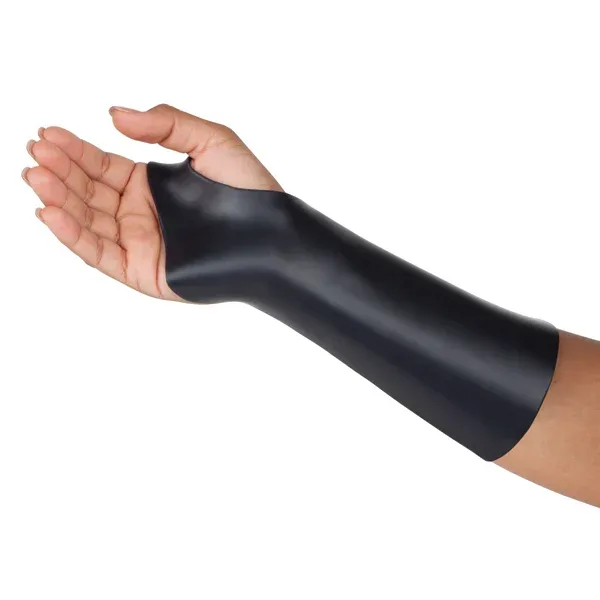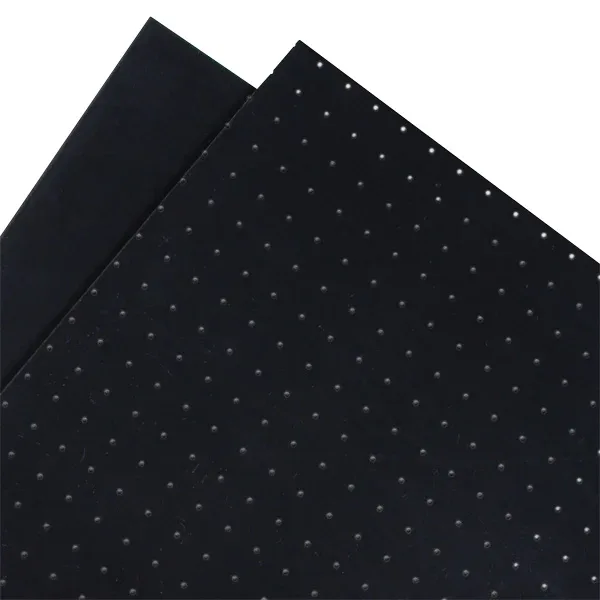Preferred Black Splinting Material
Minimum - Moderate Resistance to Stretch

One of the most versatile splinting materials can be used by novice or experienced splinters alike.
Resistance to Stretch
Minimum to moderate resistance to stretch.
Tolerates minimum to moderate handling during splint molding.
Handle on a horizontal plane and form splint in a gravity-assisted position.
Gentle, smooth motions yield superior results.
Drape
Moderate drape with only light to moderate pressure.
Contours are quick to form.
Memory
Minimum to moderate memory.
Splints can be modified a few times without thinning.
Requires less handling and maintains contours while cooling.
Rigidity
Molded splints have a moderate rigidity.
A circumferential splint is flexible enough for easy donning and doffing, yet strong enough for immobilization.
Bonding
The unique Environmentally Friendly (EF) coating gives a tacky feel that helps hold the material in place, without the material pulling or falling away.
A wet bond will hold firmly but can be pulled apart once cooled.
Dry heating two surfaces will form a strong bond.
For a permanent bond, scratch to remove the coating and apply dry heat, then press together firmly. Do not use solvent.
Instruction Guidelines included.
Surface Finish
Moderate resistance to fingerprints and resists showing stains.
Smooth, self-sealing cut edges remain sealed even after reheating.
Applications
3.2mm Preferred can be used for almost any splinting application. Use for dynamic and static splinting; for adult and pediatric positioning; and for post-burn and post-surgical care.
2.4mm Preferred is thin and lightweight, yet strong, and can be used for forearm and hand-based splints. Ideal for arthritis splints, post-operative splints, and for pediatric splints when children are able to cooperate.
Working Time
Allows three to five minutes to form and harden after softening in 71° C water.

